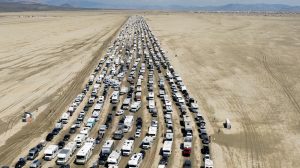
The internet’s Building Block, the mysterious power of the platform
The Plate Fourme: a paradigmatic infrastructure of the digital world and its relation to the foundations and potential of the platte fourme
This tension is important to understanding how our platforms work, as they too play a part in the actual and potential of the platform. This intrinsic malleability and openness to evolution is what makes platforms so hard to observe directly. It is only by thinking in fluid terms of processes and changes that we can start to grasp the platform not as a static object or technological foundation, but as an active infrastructure. Here it’s important that we don’t view infrastructure too narrowly (as simply referring to supporting hardware or software); instead we should follow in the footsteps of media theorist John Durham Peters and think of it expansively, as that which orders “fundamental terms and units,” arranges “people and property, often into grids,” and sets “the terms in which everyone must operate” (the idea of money, for example, can be seen as a paradigmatic infrastructure in this sense). The platte fourme was thought to be a structural blueprints, something that orders and builds the world around it.
It will give us pause that this axiomatic to our understanding of modern digital culture is not being fully examined. When it comes to large-scale apparatuses, however, blurriness tends to be a feature, not a bug.
Aspects of Contemporary Platforms: From the Real to Ideal, and Back-and-Forth between Platonic and Concrete Surfaces
If we readjust our aperture, however, the history of the term reveals something far more interesting about the nature of contemporary platforms—a tension between the real and ideal. When looking at the usage of the term, there is a constant back-and-forth between the two poles. Think of the transitions between platte fourme (as a ground plan or design), platform (as a physical surface), and platform (as a body of beliefs). The term seems to clash between abstract and concrete through its evolution. The dualism is found even in its seemingly straightforward usages. Railroad platform, for example, refers not only to the literal surface on which one can drop their luggage while waiting for a train, but also the conceptual interface that allows passengers, train conductors, and timetables to work harmoniously. These train platforms are not simply physical waiting areas, but zones integrated into a larger informational network; Platform 5 at Grand Central is both a tangible place made of concrete and steel, and an informational node that must coordinate with a broader system to ensure the proper departure and arrivals of trains.

